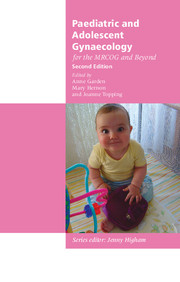Book contents
8 - Contraception
Published online by Cambridge University Press: 05 July 2014
Summary
With changes in lifestyle and improvements in the standard of living, young people are reaching physical maturity much earlier than in previous generations. As a result of this, adolescents are reaching sexual maturity earlier. Emotional and psychological maturity tends to lag behind, although this is not recognised by the teenager who strives for more independence from the family unit. The rate of teenage sexual activity has increased steadily and consistently over the second half of the 20th century. Young people now start sexual activity at an earlier age and have more sexual partners in their life. Premarital sex no longer carries a stigma and a culture of serial monogamy is now considered by many to be the norm.
Unfortunately, the use of contraception lags behind the increase in sexual activity, with the UK having the highest teenage conception rate in Europe. This prompted the implementation of a Teenage Pregnancy Strategy by the UK Government, combining provision of family planning services with education. This has contributed a steady decline in teenage pregnancy rates from 46.6/1000 in 1998 to 41.3/1000 in 2005.
Sex education
As part of the Teenage Pregnancy Strategy, local authorities were told to prioritise sex and relationship education in schools and charged with developing a comprehensive programme of sex and relationship education in all schools.
Sex education is not based entirely around anatomy and the act of sexual intercourse.
- Type
- Chapter
- Information
- Publisher: Cambridge University PressPrint publication year: 2008

